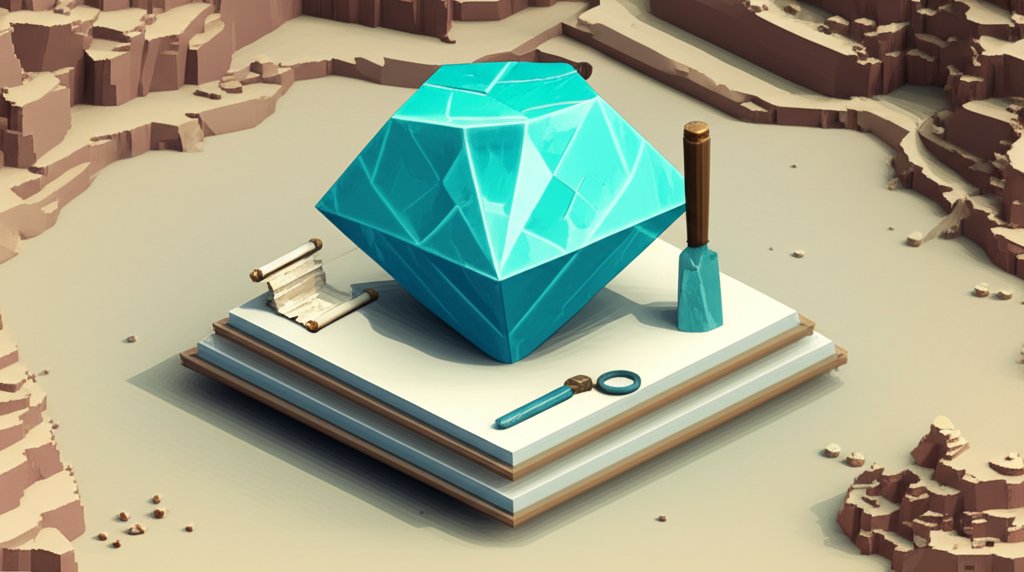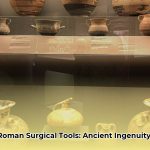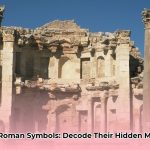Welcome, fellow gem enthusiasts and curious minds, to an unparalleled journey into the heart of one of Earth’s most captivating treasures: the turquoise gemstone. Often admired for its vibrant blue-green hues, turquoise stands as a symbol of the sky and sea, bridging ancient civilizations with modern mystique. But beyond its obvious beauty lies a universe of intrigue, history, and scientific marvels that most people never uncover.
Prepare to unlock turquoise’s secrets as we delve into truly lesser-known facts about turquoise, revealing the hidden gems turquoise has to offer. This article is your definitive guide to understanding this enigmatic stone, transforming your perception from a simple adornment to a profound piece of geological and cultural history. We’ll explore its surprising characteristics, its incredible journey through millennia, and insights that will forever change how you view this revered mineral.
The Earth’s Azure Tapestry: What is Turquoise?
The journey to understanding turquoise begins with its very essence. Far from being just a pretty rock, the turquoise gemstone is a remarkable mineral with a fascinating geological genesis. Its unique composition and formation process contribute to its distinct appearance and a host of properties that make it truly special.
A Mineralogical Marvel: Composition and Formation
Scientifically, turquoise is an opaque, blue-to-green mineral, a hydrated phosphate of copper and aluminium, with the chemical formula CuAl₆(PO₄)₄(OH)₈·4H₂O. The presence of copper is what primarily gives turquoise its characteristic blue color, while iron impurities lend it a greener tint. Formed in arid regions, turquoise is a secondary mineral, meaning it’s created when existing minerals undergo chemical alteration.
This transformation typically occurs in weathered volcanic rocks or sedimentary deposits, where groundwater containing dissolved copper, aluminium, and phosphate seeps into crevices and fissures. Over millions of years, under specific conditions of pressure and temperature, these elements crystallize to form turquoise. This intricate dance of geology makes each piece of turquoise a unique testament to Earth’s artistic processes.
The Spectrum of Azure: Color Variation and Matrix
While often envisioned as a singular robin’s-egg blue, the color of turquoise can range from sky blue to apple green, often with veins of brown, black, or yellowish-brown matrix (the remnant of the host rock). This matrix is often composed of limonite or sandstone. Spiderweb matrix, a fine network of dark lines, is particularly prized, especially in certain American turquoise varieties.
The intensity and consistency of the blue are key factors in determining its value, with a pure, evenly distributed sky-blue hue often considered the most desirable. However, the unique patterns and earthy tones of matrixed turquoise hold a special appeal for many, adding character and a tangible connection to its origins beneath the Earth.
A Deep Dive into History: Ancient Roots and Global Reach
The allure of turquoise is anything but new; its history is as rich and layered as the Earth from which it’s extracted. Among the most compelling facts about turquoise is its enduring significance across diverse ancient cultures, solidifying its status as one of humanity’s oldest and most continuously cherished gemstones.
Pharaohs, Priests, and Pyramids: Egyptian Reverence
Dating back over 7,000 years, turquoise was first mined by ancient Egyptians in the Sinai Peninsula, which they called “Country of Turquoise.” This was not merely an adornment for them; it was a sacred stone, associated with the goddess Hathor, protector of miners. Pharaohs adorned themselves with elaborate turquoise necklaces, amulets, and ceremonial objects, believing it offered protection and invoked divine power. Perhaps the most famous example is the burial mask of Tutankhamun, intricately inlaid with dazzling turquoise, lapis lazuli, and carnelian, symbolizing eternal life and royal authority.
Sacred Stone of the Americas: Native American Heritage
Across the globe, Native American tribes, particularly in the Southwestern United States, held turquoise in equally high esteem. For cultures like the Navajo, Zuni, and Pueblo, turquoise was more than a gem; it was a sacred stone of protection, healing, and good fortune, embodying the spirit of the sky and water. It was used in ceremonies, as currency, carved into effigies, and inlaid into tools and personal adornments. The belief that turquoise connected the wearer to the spiritual world and brought blessings from their ancestors is a powerful hidden gem turquoise of cultural understanding.
The Sky Stone of Persia and Tibet: Symbolism and Trade
Ancient Persians revered turquoise as “firoze,” meaning “victorious,” believing it warded off evil and brought good health. They used it extensively in architecture, adorning mosques and palaces with its vibrant blue tiles, and fashioned it into amulets worn to protect against the “evil eye.” It was believed that a change in the stone’s color indicated illness or impending danger, a fascinating early example of its perceived mystical properties.
The name “turquoise” itself, deriving from the French “pierre turques” (Turkish stone), hints at its pivotal role in early trade. Though not mined in Turkey, the stone traveled through Turkish trade routes from Persia to Europe, leading to its common nomenclature. In Tibet, turquoise was considered a national treasure and a sacred stone, used as currency and worn for good luck and protection throughout one’s lifetime. It symbolized the wisdom of the sky and the cleansing power of water, integrated into every aspect of life, from prayer beads to ceremonial costumes.
Beyond the Surface: Truly Lesser-Known Facts About Turquoise
While its beauty and ancient heritage are well-known, deeper investigation unveils lesser-known facts about turquoise that add layers of wonder and a practical understanding of this unique turquoise gemstone.
While turquoise boasts a unique chemical makeup, it’s just one of many fascinating stones; to broaden your knowledge, you can discover more intriguing facts about gemstones on our website.
Its Surprising Softness and Porosity
Contrary to its durable appearance, turquoise is a relatively soft stone, ranking 5 to 6 on the Mohs hardness scale. This makes it susceptible to scratches and chipping, especially when exposed to hard impacts. Even more intriguing is its porosity. Turquoise is naturally absorbent, meaning it can soak up oils, sweat, and chemicals. This porosity is a key reason why untreated turquoise can change color over time – from a vibrant blue to a greener hue – a phenomenon often romanticized as the stone “living” or “aging” with the wearer. In reality, it’s often a chemical reaction to its environment.
The Elusive “Living Stone”: Myth vs. Science
The idea that turquoise changes color to reflect the wearer’s health or impending danger is a captivating legend, deeply rooted in both Persian and Native American folklore. While poetic, the scientific explanation is less mystical. As a porous material, untreated turquoise reacts to its surroundings. Exposure to skin oils, cosmetics, cleaning products, prolonged sunlight, or even changes in humidity can alter its delicate chemical balance, leading to a shift in its hue. This doesn’t diminish its beauty or historical significance, but rather highlights its intimate connection to its environment, making it a truly responsive hidden gem turquoise.
Not All “Turquoise” Is Created Equal: Treatments and Imitations
One of the most crucial facts about turquoise for any buyer is the prevalence of treatments and imitations. Due to its softness and porosity, and the increasing rarity of high-grade natural material, much of the turquoise on the market today has undergone some form of treatment to enhance its durability, color, or stability.
- Stabilized Turquoise: The most common treatment involves impregnating porous turquoise with an epoxy resin, often under pressure, to harden it and improve its color. This makes the stone more durable and less prone to discoloration.
- Enhanced Turquoise (Color-Treated): Sometimes, stabilizing resins are dyed to achieve a more vivid or uniform color.
- Reconstituted (Block) Turquoise: Lower-grade turquoise fragments and dust are crushed, mixed with resin and dye, and then pressed into blocks. This material is not natural turquoise, though it contains turquoise.
- Imitations: Completely different materials are often dyed to mimic turquoise. Common examples include dyed Howlite, Magnesite, or even plastic or glass. Variscite, while a natural mineral, is sometimes mistaken for turquoise due to its similar appearance but typically has a greener hue and different chemical composition.
Understanding these distinctions is essential for appreciating the true value and rarity of natural, untreated turquoise gemstone.
The Rare Beauty of Untreated, Natural Turquoise
The discovery of a high-quality, completely natural and untreated turquoise gemstone is increasingly rare, making such pieces highly prized. Factors influencing its value include:
- Color: Deep, even sky-blue (e.g., Persian blue) is often most sought after.
- Clarity/Matrix: Absence of matrix or a highly desirable spiderweb matrix.
- Origin: Historically famous mines (like Sleeping Beauty in Arizona, now closed, or certain Persian mines) can add value.
- Hardness/Stability: Naturally harder, less porous material is more durable and less likely to change color.
The rarity of these pieces makes them true hidden gems turquoise collectors and enthusiasts covet.
Caring for Your Celestial Treasure: Preservation Tips

Given its delicate nature, proper care is paramount to maintaining the beauty of your turquoise gemstone. Ignoring these facts about turquoise can lead to irreversible damage or discoloration.
Protecting Your Gemstone: Do’s and Don’ts
- Avoid Chemicals: Turquoise is highly sensitive to chemicals found in lotions, perfumes, hairsprays, and cleaning solutions. Always put on turquoise jewelry after applying cosmetics and remove it before doing household chores.
- Minimize Exposure to Oils: Natural skin oils can darken turquoise over time. While some appreciate this “patina,” it’s a permanent change. Consider wearing turquoise as a statement piece rather than daily contact with exposed skin in oily areas.
- Protect from Heat and Sunlight: High heat can cause turquoise to crack, and prolonged exposure to strong sunlight can fade its color.
- Guard Against Scratches and Impacts: Due to its softness, turquoise can scratch easily. Be mindful of knocking it against hard surfaces.
Cleaning and Storing Turquoise Properly
- Gentle Cleaning: Clean turquoise gently with a soft, damp cloth. Avoid ultrasonic cleaners, steam cleaners, or harsh detergents, as these can damage the stone.
- Separate Storage: Store turquoise jewelry separately from harder gemstones to prevent scratches. Wrap it in a soft cloth or keep it in a fabric-lined box. Ensure it’s stored in a stable environment, away from extreme temperature changes.
- Re-stringing: For beaded turquoise necklaces or bracelets, periodic re-stringing is advisable, especially if the string shows signs of wear, to prevent loss of beads.
The Future of Turquoise: Sustainability and Appreciation
As we conclude our exploration of this magnificent turquoise gemstone, it’s clear that its story is far from over. The global demand for turquoise continues, fueling interest in ethical sourcing and sustainable mining practices.
Ethical Sourcing and Responsible Mining
The beauty of turquoise comes directly from the Earth, and ensuring its extraction is done responsibly is increasingly vital. Efforts are ongoing to support mines that adhere to ethical labor practices and minimize environmental impact. Consumers can play a role by seeking out reputable jewelers who provide transparent information about their turquoise’s origin and treatments.
A Timeless Allure in Modern Jewellery
From ancient pharaohs to contemporary fashion, turquoise’s appeal endures. Its unique color palette, rich history, and profound symbolism continue to inspire designers and captivate wearers. Whether cherished for its believed protective qualities, its vibrant aesthetic, or its deep historical connections, the turquoise gemstone remains a powerful and beloved adornment.
Conclusion: A Gem of Endless Discovery
Our journey to unlock turquoise’s secrets has revealed a stone far more intricate and fascinating than meets the eye. From its humble origins as a copper ore to its elevated status as a revered cultural icon and a surprisingly delicate mineral, the turquoise gemstone is truly a marvel. We’ve uncovered lesser-known facts about turquoise – its surprising porosity, the scientific truth behind its “living stone” myth, and the crucial distinctions between natural and treated varieties – unveiling the true hidden gems turquoise has hidden within its azure depths.
Next time you encounter a piece of turquoise, remember the millennia of history it carries, the geological forces that shaped it, and the diverse cultures that have adored it. Appreciate not just its mesmerizing color, but the profound story it tells – a testament to Earth’s wonders and humanity’s enduring fascination with its treasures.
FAQ Section: Your Questions About Turquoise Answered

Q: Is turquoise truly a “living stone” as some cultures believe?
A: While ancient beliefs describe turquoise as a “living stone” that changes color with the wearer’s health or luck, the scientific explanation is that natural, untreated turquoise is porous. Its color can change due to absorption of oils, cosmetics, chemicals, or prolonged exposure to light and heat, which alters its delicate chemical composition. This makes it responsive to its environment, giving rise to the “living stone” myth.
Q: What is the rarest color of turquoise?
A: The most highly prized and rare color of turquoise is often described as a pure, intense, robin’s-egg blue, similar to the finest Persian turquoise or certain types of Sleeping Beauty turquoise (now largely depleted). While specific shades can vary by mine and preference, this vibrant, clear blue with little to no green undertone is generally considered the most valuable.
Q: How can I tell if my turquoise is real or treated/imitated?
A: Identifying natural, untreated turquoise versus treated or fake versions can be challenging without gemological tools. However, some clues include:
Q: Which historical cultures valued turquoise the most?
A: Many cultures revered turquoise, but ancient Egyptians, Persians, Tibetans, and various Native American tribes (especially in the Southwestern USA like the Navajo, Zuni, and Pueblo) held it in particularly high esteem. They used it extensively in jewelry, ceremonial objects, architecture, and as a symbol of protection, power, and good fortune.
Q: What is the chemical formula of turquoise?
A: The chemical formula for turquoise is CuAl₆(PO₄)₄(OH)₈·4H₂O. This indicates it is a hydrated phosphate of copper and aluminium, with copper contributing to its distinctive blue color, and iron impurities often leading to greener shades.
Q: Why is it called “turquoise” if it’s not mined in Turkey?
A: The name “turquoise” comes from the Old French “pierre turques,” meaning “Turkish stone.” This name arose because the stone was introduced to Europe through trade routes that passed through Turkey from its primary mining sources in Persia (modern-day Iran). So, while not mined in Turkey, it was a prominent trading hub for the gem.
Q: What is the “matrix” in turquoise, and does it affect its value?
A: The “matrix” refers to the remnants of the host rock (often limonite or sandstone) that are visible as veins or patterns within the turquoise gemstone. Whether it affects value depends on the type. A plain, pure blue stone without matrix is often highly prized. However, a fine, evenly distributed “spiderweb” matrix, particularly in certain American turquoise varieties, can be extremely desirable and significantly increase the gemstone’s value. Conversely, an uneven or unattractive matrix can decrease its value.










